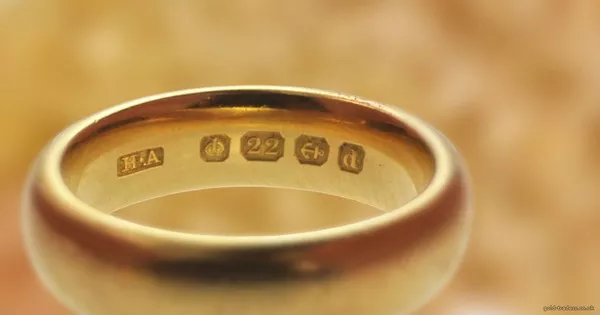The elegance and timeless beauty of gold rings make them a popular choice for jewelry enthusiasts. However, amidst a market flooded with imitation pieces, it becomes imperative to know how to distinguish genuine gold rings from their counterfeit counterparts. In this comprehensive guide, we will explore various methods and techniques that can help you determine if a ring is made of real gold.
Conduct Visual Inspection:
Begin your assessment by visually examining the ring for the following indicators:
a) Color: Authentic gold rings typically exhibit a distinct yellow hue. However, it is essential to note that gold alloys can vary in color due to different metal compositions. Avoid rings with greenish or reddish tints, as these are often associated with counterfeit gold.
b) Consistency: Real gold possesses a uniform color and luster throughout the ring’s surface. Any signs of discoloration, unevenness, or fading may suggest that the ring is not made of pure gold.
c) Hallmarks and Stamps: Look for hallmarks or stamps inside the ring’s band. Genuine gold rings often bear markings indicating the karat value (e.g., 10K, 14K, 18K) or a manufacturer’s symbol. However, be aware that some counterfeit rings may feature fake stamps, so further examination is necessary.
Seek Professional Appraisal:
To ensure a definitive assessment of your gold ring’s authenticity, consider consulting a professional jeweler or appraiser. These experts have the necessary knowledge, experience, and specialized equipment to conduct accurate tests. A professional appraisal can provide you with detailed information about the ring’s gold content and help determine its value.
Perform Acid Test:
The acid test is a reliable method widely used to assess gold authenticity. However, it should be conducted with caution and protective measures. Here’s how it works:
a) Scratch a small, inconspicuous area on the ring’s inner band, ensuring that you collect a visible amount of gold dust.
b) Obtain a gold testing kit, including nitric acid, and carefully follow the manufacturer’s instructions.
c) Apply a small drop of nitric acid to the scratched area. If the ring remains unaffected and shows no signs of discoloration or fading, it is likely made of genuine gold. However, if the acid causes the scratched area to turn green or fade, it indicates that the ring is not pure gold.
Perform Density and Weight Comparison:
Gold possesses a higher density compared to most other metals. By comparing the weight of the ring to its volume, you can estimate its density and determine if it is made of real gold:
a) Use a precision scale to weigh the ring accurately.
b) Measure the ring’s volume by submerging it in a known amount of water and measuring the water displacement.
c) Divide the weight by the volume to calculate the density. Genuine gold typically has a density of approximately 19.3 grams per cubic centimeter.
Magnetic Properties:
Gold is a non-magnetic metal. While this method alone is not foolproof, it can help indicate if a ring is made of real gold:
a) Hold a strong magnet close to the ring and observe any magnetic attraction.
b) If the ring is attracted to the magnet, it suggests that it is not made of pure gold and likely contains other metals.
Conclusion:
When investing in gold rings or assessing the authenticity of an existing piece, employing a combination of methods is crucial to ensure accurate results. Visual inspection, professional appraisal, acid testing, density and weight comparison, and magnetic testing are effective techniques to determine if a ring is made of real gold. Remember, if you have any doubts or seek a definitive assessment, consult with a reputable jeweler or appraiser to make informed decisions about your gold rings.


